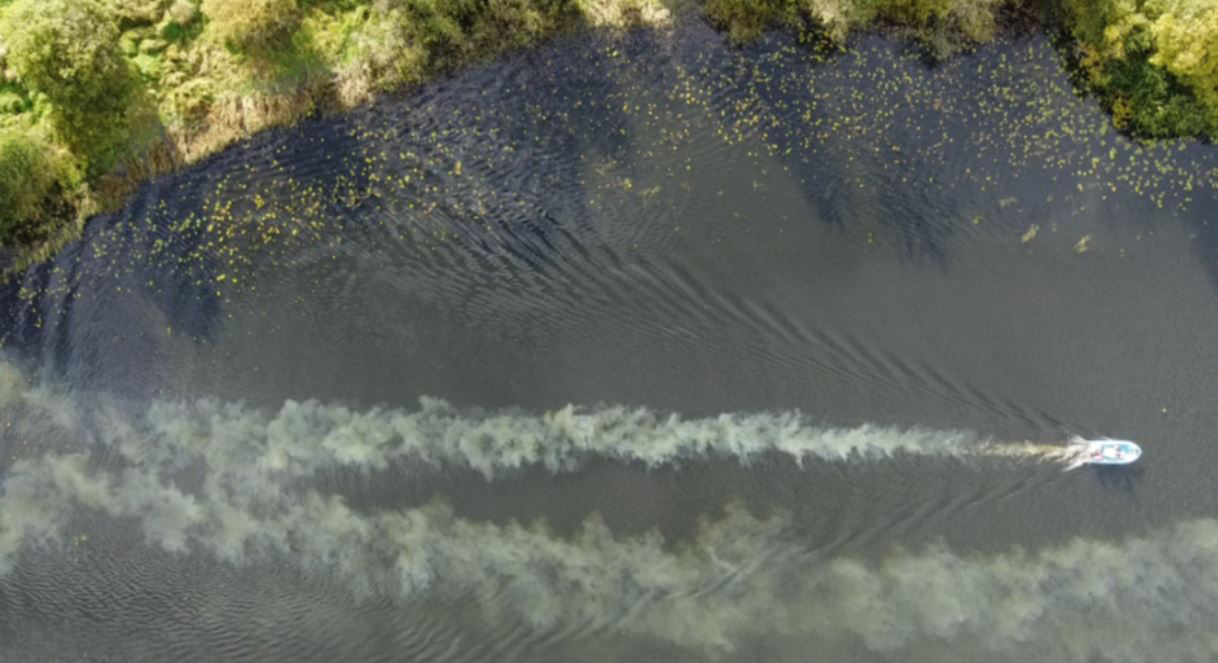Water Professionals - Rivers and Lakes
A key aim of the CatchmentCARE Project was to establish 3 water quality improvement projects in the Finn, Arney and Blackwater Catchments, all of which lie in cross-border regions.
In order to achieve this aim, CatchmentCARE teams in the three catchments conducted scoping surveys on the rivers and tributaries of each catchment, collecting data on fish populations, river and riparian habitats, macroinvertebrates and barriers to migration surveys.
Data collected during this process were used to identify areas where habitat protection and restoration measures should be implemented to improve water quality and protect and enhance the riparian and instream habitat.
Several different measures were implemented at all the sites addressed, depending on what was required at the site, and these included:
- Installing fencing along river banks;
- Creation of riparian buffer strips;
- Planting of trees and shrubs;
- Bush trimming/ de-tunnelling;
- Improving access to the river by installing stiles and gates;
- Installation of rubble mats;
- Pinning of woody material;
- Artificial pool creations;
- Installation of artificial meander complexes;
- Installation of pool/ riffle/ run sequences;
- Spawning gravel regrading/ cleaning;
- Green engineering to prevent erosion;
- Removal of barriers to fish migration; and
- Installation of offline drinking solutions for livestock.
The CatchmentCARE teams responsible for this work in the three Catchments carried out instream and riparian protection and improvement works at numerous sites and, by the end of the project, had delivered:
- 80.8km of bank stabilisation measures;
- 98.9km of riparian buffer zone creation;
- 22 sites demonstrating best practice techniques to river restoration;
- 130 pieces of instream habitat improvement works;
- 2 barriers to fish migration removed;
- 28 sites of pinned woody material; and
- 455 offline drinking solutions installed.
Protecting and improving water quality is not only important for the health of our rivers, the species of plants and animals that live in them and human health but is also a requirement of the Water Framework Directive which endeavours to improve all freshwater bodies status to at least “Good” status.
Only 2.5% of the Earth’s water is freshwater and, of that 2.5%, only 1.2% is surface water which is used by all living things, Humans, animals and plants to survive. So it is easy to see why it is so important for us to make every effort to protect this precious resource in every way we can.
Ulster University – Lake Remediation Work
224 lakes are monitored by the Irish EPA enabling a comprehensive national overview of the ecological and chemical status of Irish lakes. As part of the CatchmentCARE project, Ulster University carried out research on a series of cross border loughs. One of the main factors responsible for lakes with moderate/poor ecological status is nutrient enrichment – specifically the addition of phosphorus and nitrogen from anthropogenic sources.
Most work which tries to improve ecological status of lakes have sensibly aimed to reduce the nutrient load to catchments – from both sewage treatment and agriculture. In some circumstances, the nutrient load to lakes has been so high, for such a long period, that even with significant reduction, the lake sediment will continue to enrich the overlying water for many years to come.
 Ulster University’s work assessed the feasibility of using chemical salts to remove phosphorus from the water column, locking it away into the sediment of a lake and in turn increasing the lake’s ecological status as measured by the Water Framework Directive.
Ulster University’s work assessed the feasibility of using chemical salts to remove phosphorus from the water column, locking it away into the sediment of a lake and in turn increasing the lake’s ecological status as measured by the Water Framework Directive.
For more information about this area of CatchmentCARE’s work please click the link below

